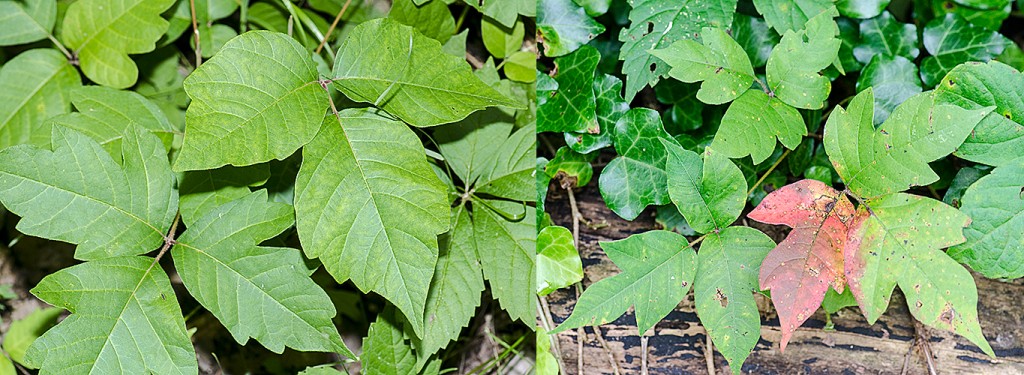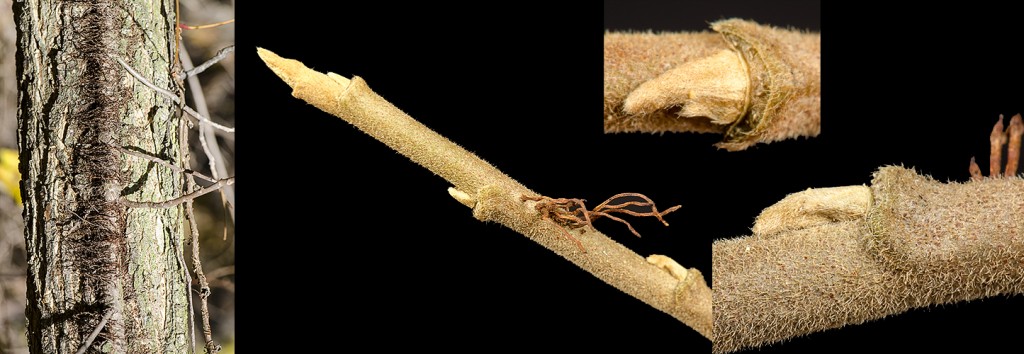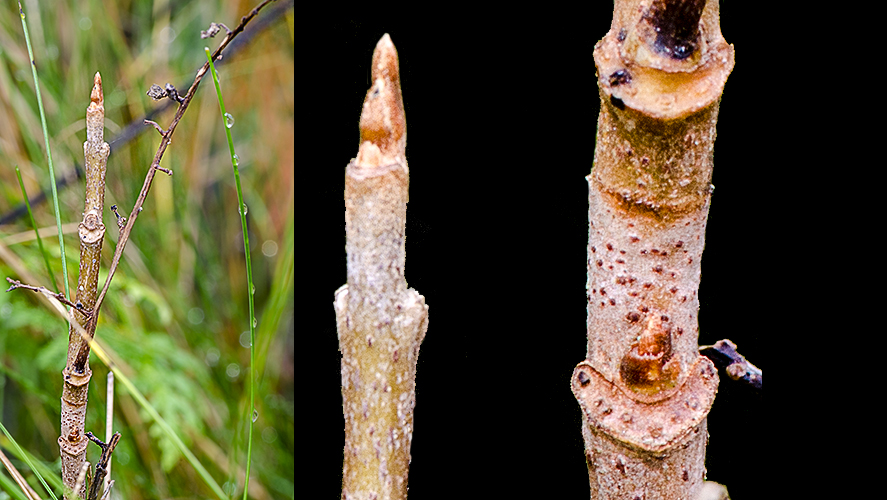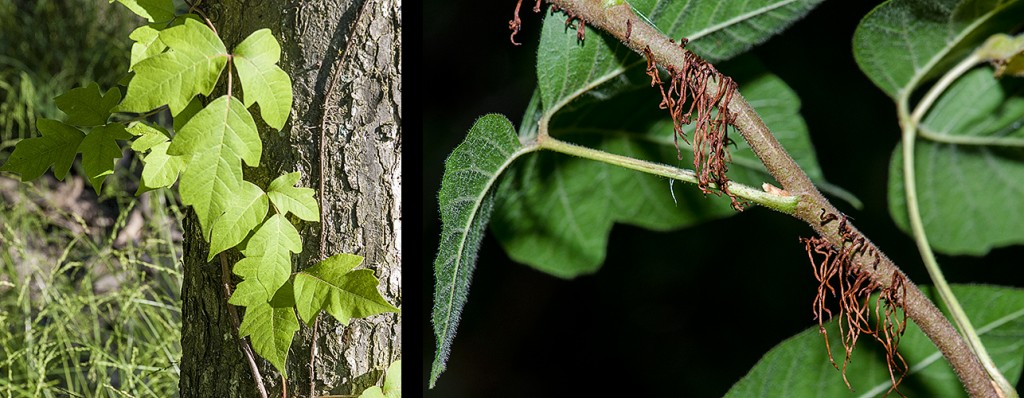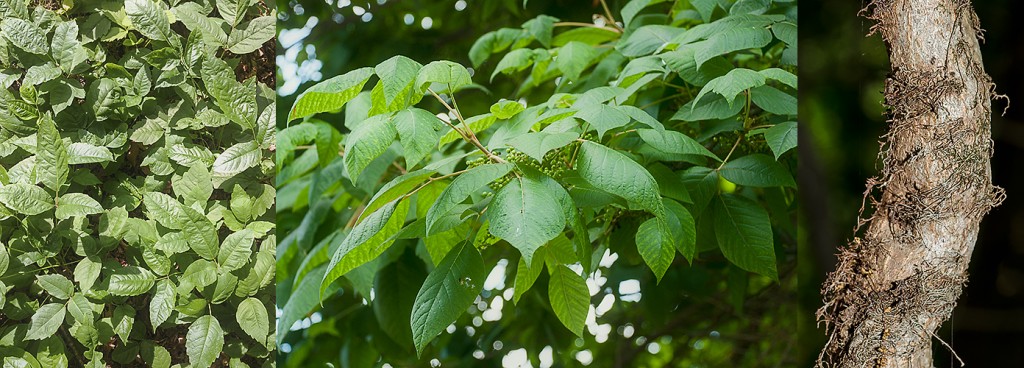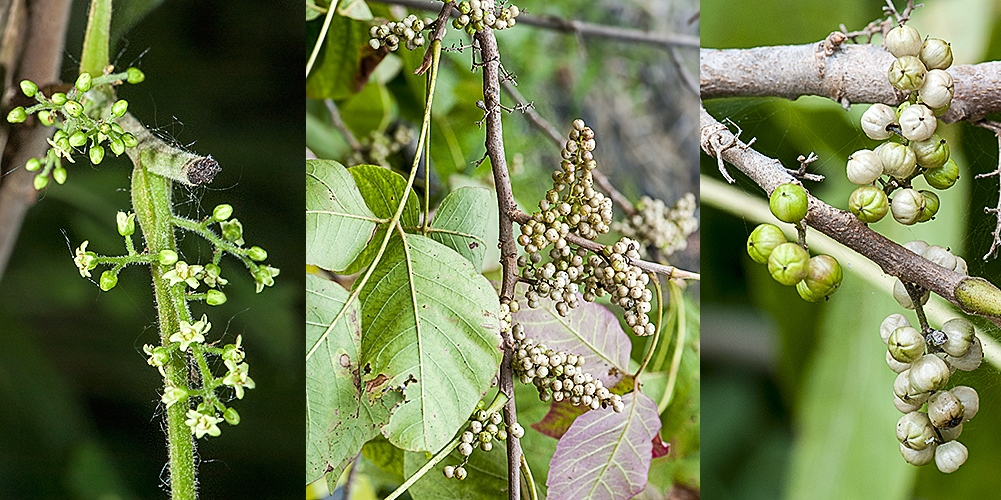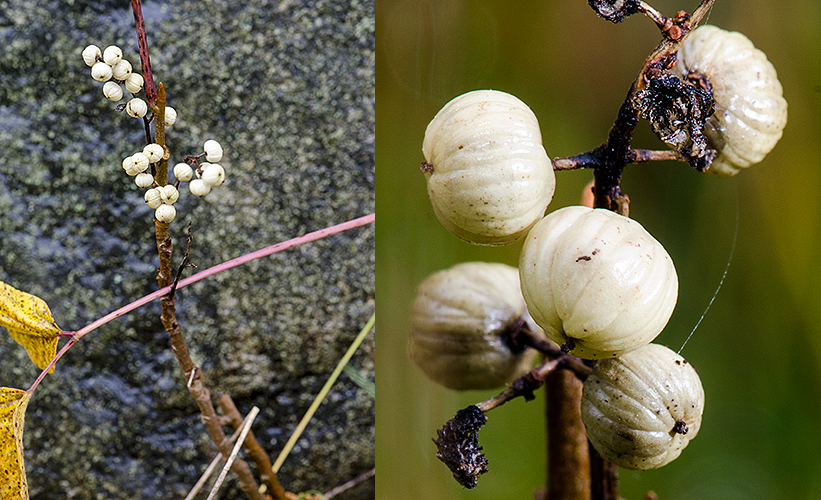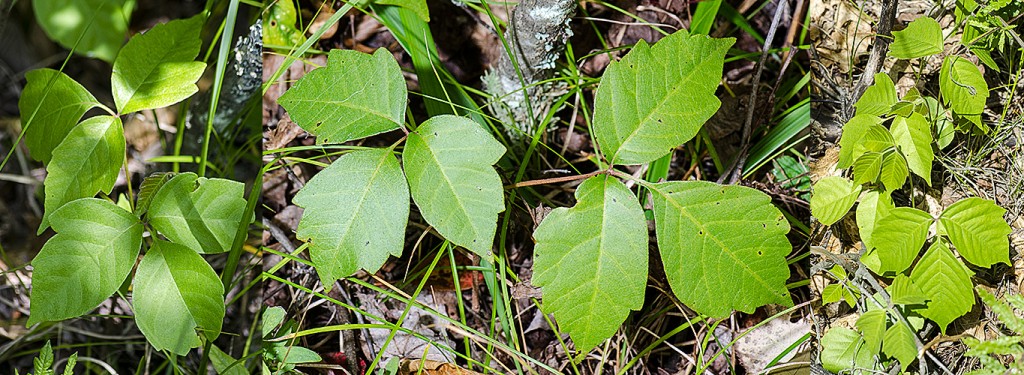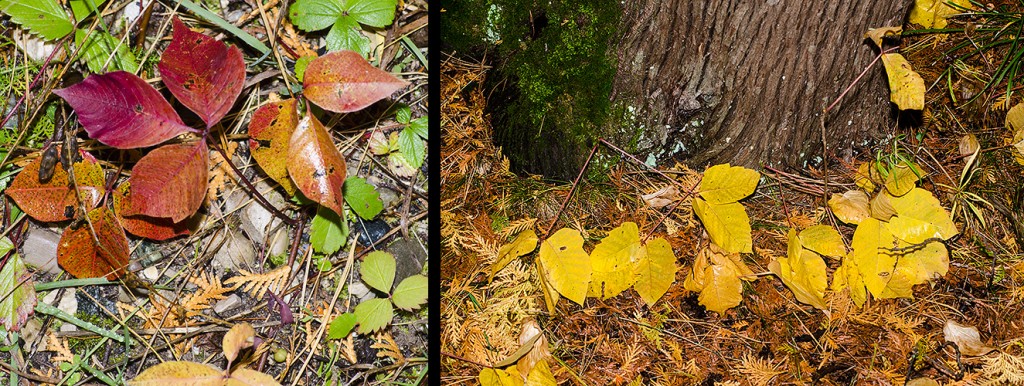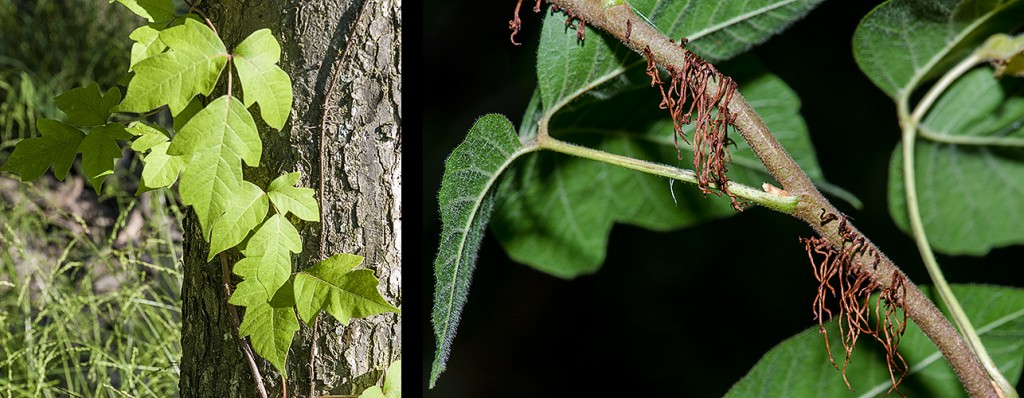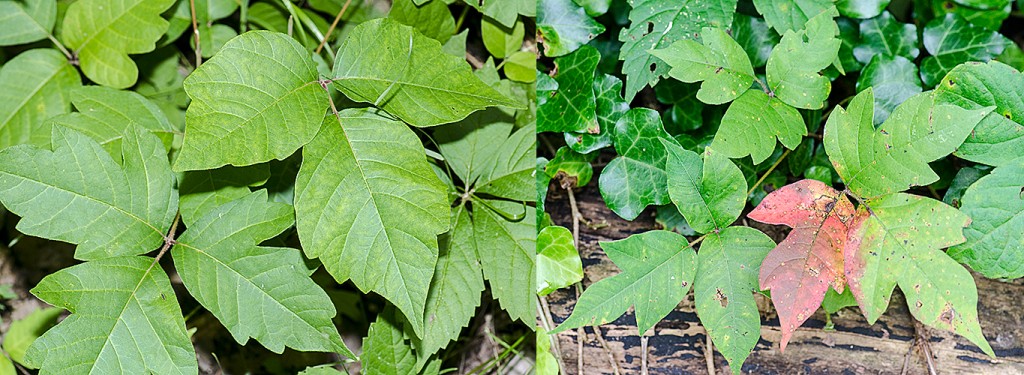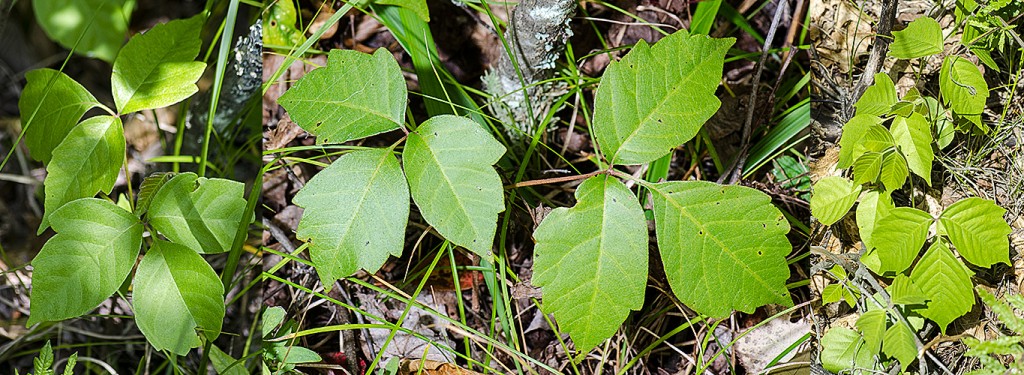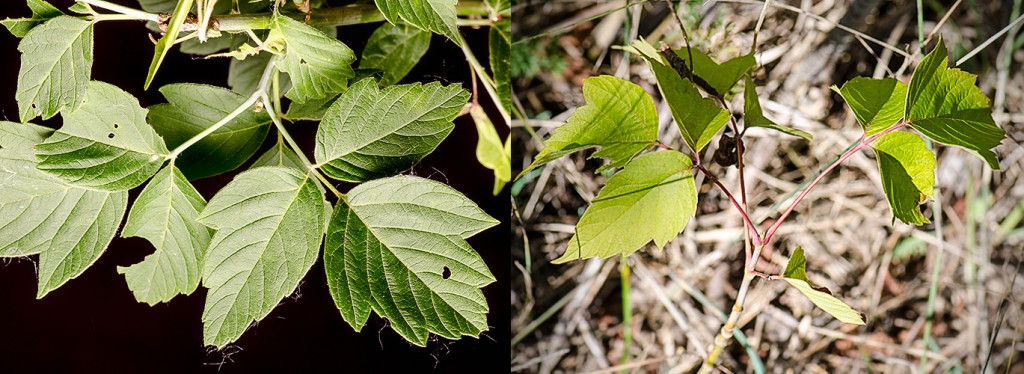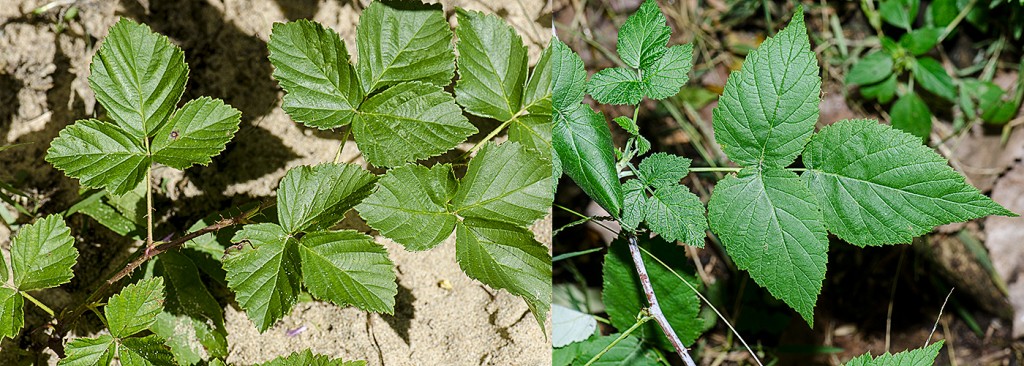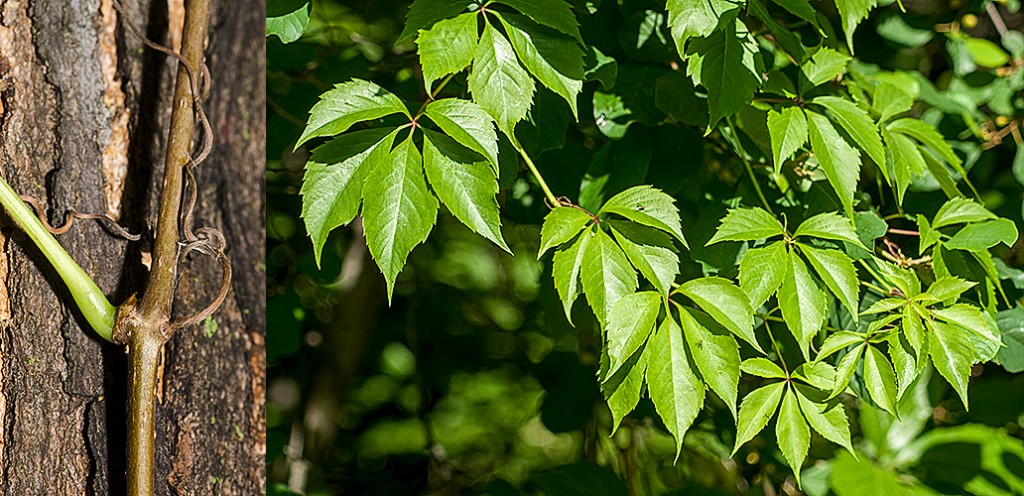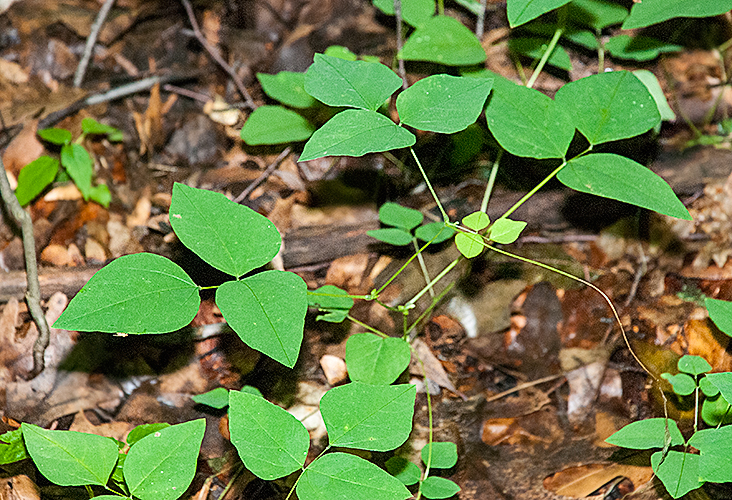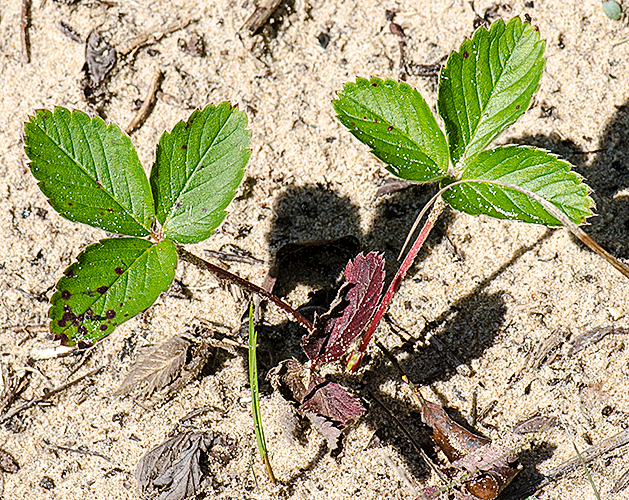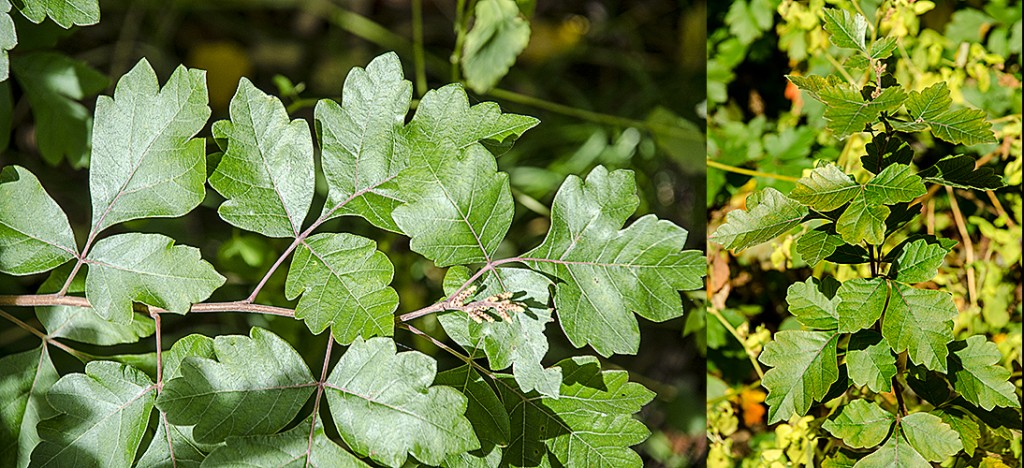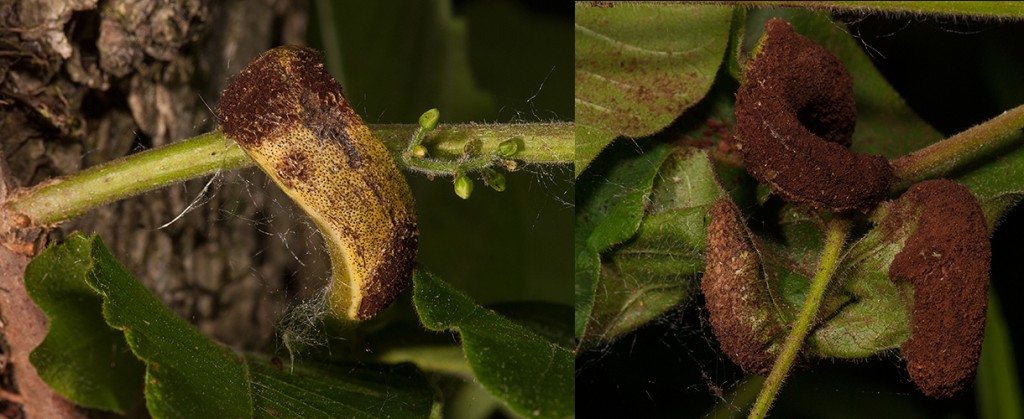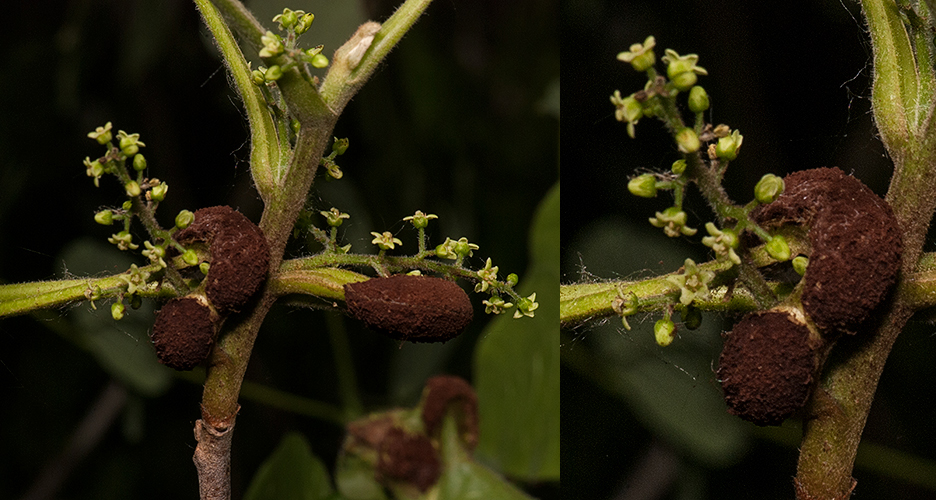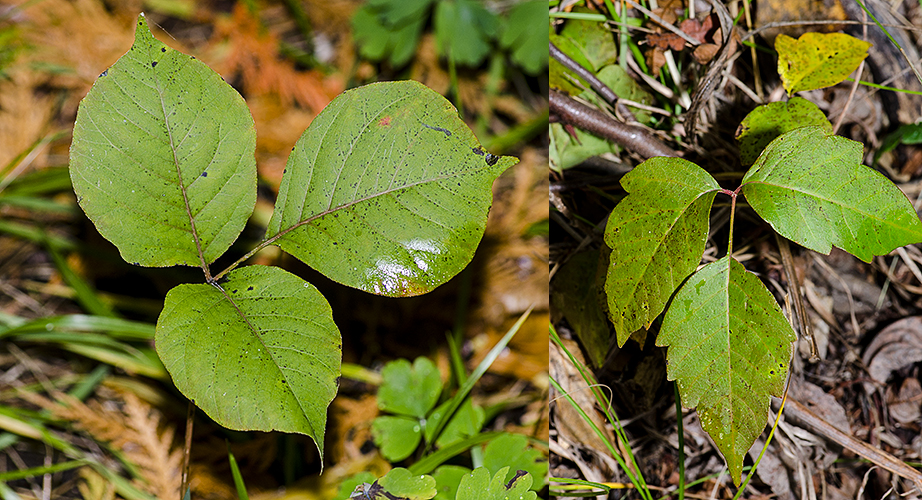
Western Poison Ivy: left side shows a toothless form. The black dots are dried droplets of urushiol oil. It is milky white when fresh but dries black.
There are two species of Poison Ivy in Michigan. Both species of Poison Ivy have leaves with three leaflets that are notched with large teeth. The lateral leaflets are short stalked and the terminal leaflet has a longer stalk. The teeth are normally found on half of the leaflet, the half closest to the tip. The alternate (singly along the stem) leaves are smooth above, normally shiny and normally they are larger than the leaves of other three leaflet plants. Poison Ivy fruit is a whitish-grayish drupe. (A drupe is a fleshy fruit encasing a seed, for example a cherry or peach). Birds and deer eat the fruit and disperse the seeds.
Poison Ivy in the winter is recognized by its hairy, grayish, lateral buds with half-rounded or shield shaped leaf scars. There are no stipule scars. The terminal buds end in an abrupt point. Twigs are normally gray but can also have a reddish (or even a greenish) tint. The twigs have many lenticels (dots on twigs) and their pattern is distinct but difficult to describe. If it is Eastern Poison Ivy then it will normally climb and have aerial rootlets without tendrils. The urushiol oil is present in all parts of the plant including the bark and buds so you are not safe from poison ivy in the winter. See blog post for winter twig terminology.
Poison Ivy is in the Anacardiaceae (Cashew or Sumac family). Most of the family’s 800 species are tropical. They include the Cashew, Pistachio, and Mango. Eight species grow wild in Michigan, seven are native.
Although nothing controls common names, the name Poison Oak is best used for species that do not occur in Michigan. Western or Pacific Poison Oak (Toxicodendron diversilobum) occurs along the west coast of the United States. Atlantic poison oak (Toxicodendron pubescens) grows in the southeastern United States.
Eastern Poison Ivy (Toxicodendron radicans), in Michigan, is found mainly south of West Branch. It is a vine that can creep along the ground or climb trees. I have seen branches over three feet (1m) long sticking out from the climbing vine, giving the appearance of a Poison Ivy tree. Sometimes, if it lacks a support, it will form a small shrub. It grows in swamp-forests, floodplains, upland woods, and gardens.
Eastern Poison Ivy, according to William Gillis, “Is distributed from southern Canada to western Guatemala, the eastern third of the United States and throughout Mexico, on Bermuda, and in the western Bahamas, in Japan, western and central China and Taiwan, the Kurile Islands and Sakhalin of the U.S.S.R.” He recognized nine subspecies with the Michigan plants belonging to the subspecies negundo. Negundo refers to Box-elder (Acer negundo) which this plant resembles. (See blog post.)
Eastern Poison Ivy has petioles (leaf stalks) with fine hairs and they are normally shorter than the leafblade is long. Leaflets are flat and narrower than Western Poison Ivy. Normally they are longer than they are wide. Its fruits are smaller than Western Poison Ivy and tend to be grayish-white. Flowering and fruiting clusters hang and normally have 25 or more flowers or fruits in each cluster.
Western Poison Ivy (Toxicodendron rydbergii) grows north of the Saginaw-Muskegon line but does occur along most of Lake Michigan’s coastline. It is a small woody plant without aerial rootlets so it never climbs. Its petioles (leaf stalks) are glabrous and they are normally longer than Eastern Poison Ivy. Leaflets are cupped and broad, close to as long as they are wide. Its fruits are larger than Eastern Poison Ivy and tend to be whiter. Flowering and fruiting clusters are held upright and seldom droop. They contain few flowers, normally less than 20 in each cluster. It grows in sand dunes, along railroads, on road shoulders, and edges of woods. It is found in sand or gravel. Eastern Poison Ivy is normally in richer soil.
Hybrids between Eastern and Western Poison Ivy are known and occur along the band where the two species overlap. They are intermediate between the two species.
The two species are normally quite distinct. However, please note the number of times I wrote “normally” when contrasting these two species. Look at a number of characters before deciding which species you are dealing with. I posted this more to illustrate the range of variation in Poison Ivy in Michigan and to explain why it looks different in the northern or southern parts of the state. Caution: These remarks concern Poison Ivy in Michigan, the species vary more outside of the state. Once again, if in doubt, don’t touch it.
Copyright 2015 by Donald Drife
Webpage Michigan Nature Guy
Follow MichiganNatureGuy on Facebook

